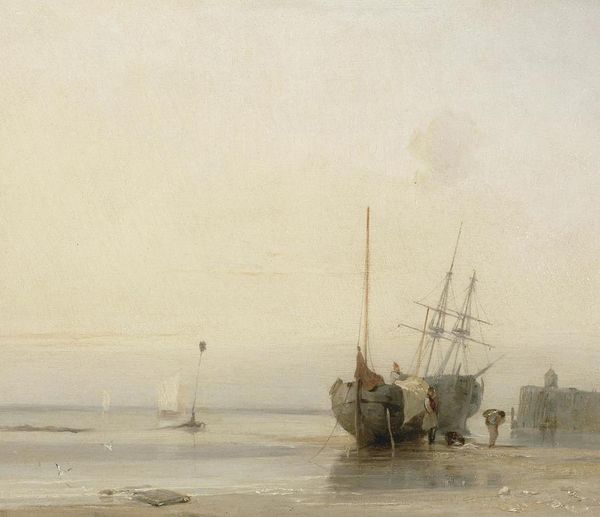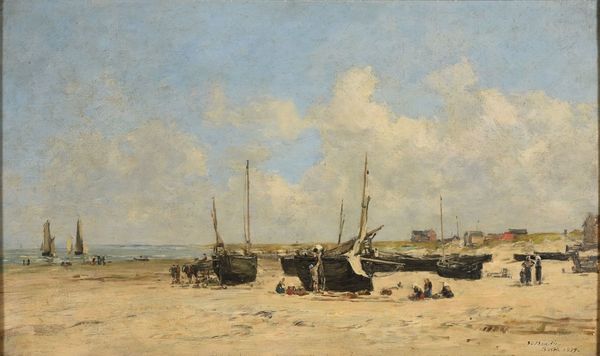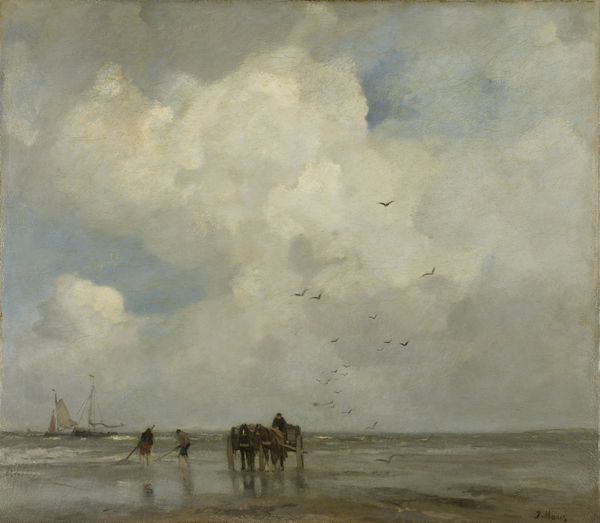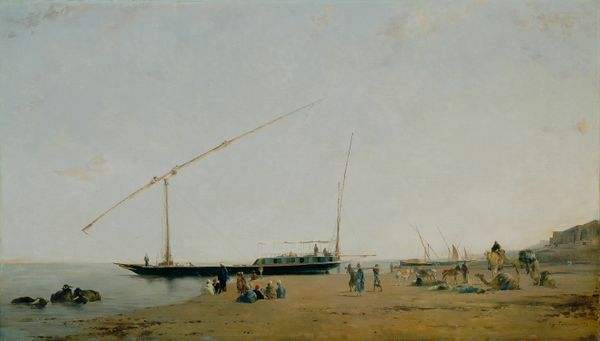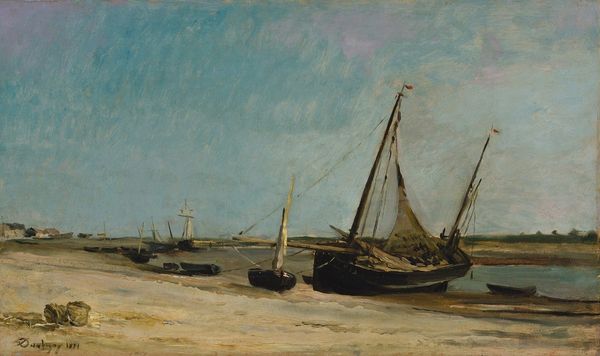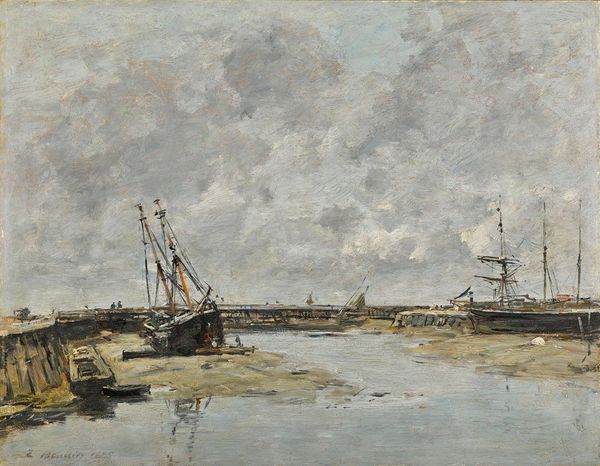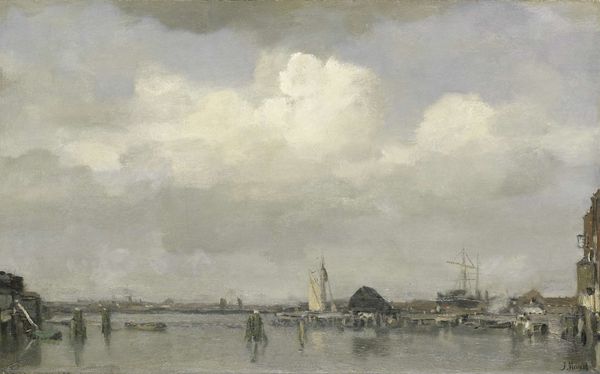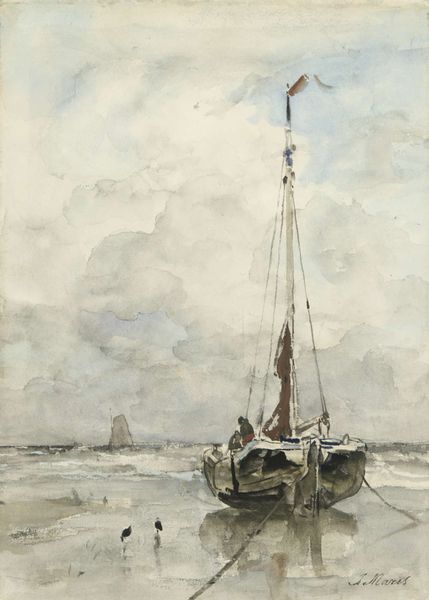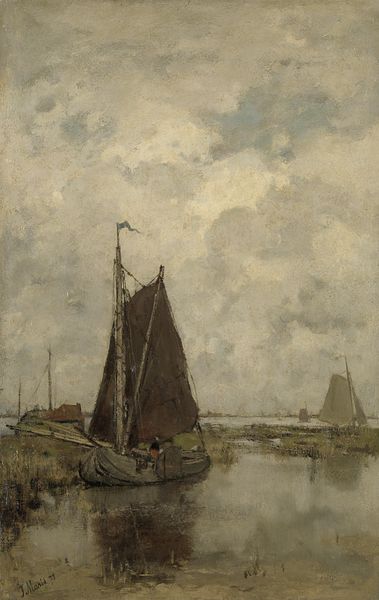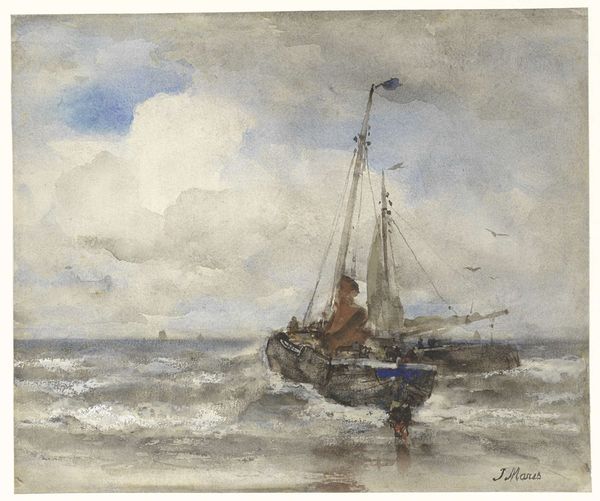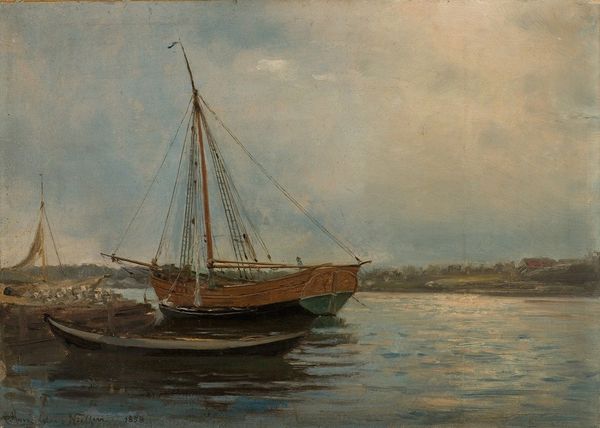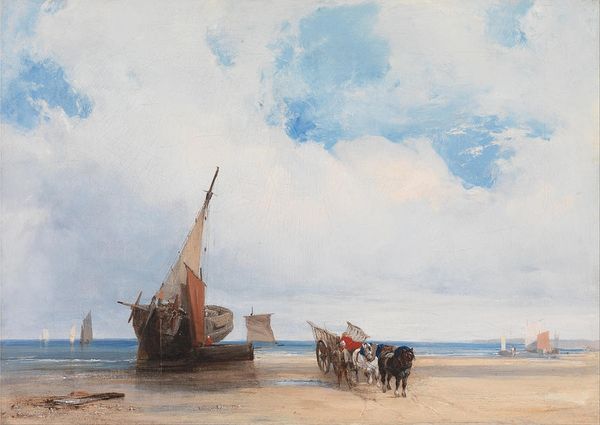
painting, plein-air, oil-paint
#
dutch-golden-age
#
painting
#
impressionism
#
plein-air
#
oil-paint
#
landscape
#
charcoal drawing
#
figuration
#
genre-painting
#
realism
Dimensions: height 101.5 cm, width 89.5 cm, thickness 3.8 cm, depth 14.5 cm
Copyright: Rijks Museum: Open Domain
Editor: So, this is Jacob Maris' "Bluff-bowed Fishing Boat on the Beach at Scheveningen," painted around 1885. It's oil on canvas, currently housed at the Rijksmuseum. It's such a subdued scene, dominated by greys, browns, and the imposing, dark form of the boat. What do you see in this piece? Curator: Well, it’s important to consider Maris in the context of late 19th-century Dutch painting, which was wrestling with its own national identity. He, and others of the Hague School, sought to represent everyday life and landscapes distinct from the more idealized Romantic views prevalent elsewhere. Notice how this isn't a glorious seascape; it depicts the hard work of fishing. Consider the social reality of these fishermen, their dependence on the sea, and how Maris portrays this through a kind of muted realism. Does the lack of vivid colour strike you in relation to impressionistic treatment of light and atmosphere? Editor: It does. The lack of vibrant colors makes it feel… almost documentary, less like a celebration of the sea and more about the reality of working on it. Are you suggesting this was a deliberate political choice? Curator: Potentially. The Realist movement more broadly was invested in depicting the unvarnished truth, often with socialist undertones, or highlighting the plight of workers, but nuance is required here, with its relation to impressionism. While not overtly political, Maris avoids romanticizing poverty. The monumental scale given to the fishing boat compared to the almost indistinct human figures hints at an interesting dynamic. Maris draws attention to these social issues but in his way avoids making bold statements of fact and perhaps leaves this in a state of uncertainty. What do you think about that choice? Editor: That's an interesting point. By not being overtly political, it may have reached a broader audience and sparked a different kind of reflection. I initially just saw a sombre painting of a boat, but understanding the historical and social context definitely enriches the work. Curator: Exactly. By understanding how socio-political forces were shaping artistic expression, we gain a richer understanding. Editor: It’s so easy to just look at the surface! Thank you!
Comments
rijksmuseum about 2 years ago
⋮
Maris painted a bluff-bowed fishing boat at sea at least sixteen times. They are studies in light and atmosphere. To avoid the problems caused by constant- ly changing light conditions, he worked in his studio. Maris also preferred to select his colours indoors, because, as he stated, it was sometimes necessary to ‘exaggerate in order to learn about the power of colours’.
Join the conversation
Join millions of artists and users on Artera today and experience the ultimate creative platform.
